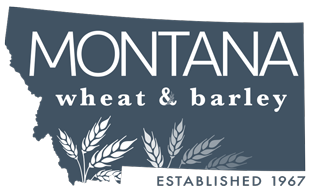Author: United States Department of Agriculture
AGRICULTURAL SUMMARY: The month of February brought below zero temperatures and snowy weather with varying
precipitation totals to the State of Montana, according to the Mountain Regional Field Office of the National Agricultural Statistics
Service, USDA.
Temperatures for the month of February ranged from 10 degrees below average to six degrees above average in several
areas across the State.
Isolated areas in the southwestern part of the State experienced average daily temperatures from 8 degrees to
more than 10 degrees below average.
Along the northern border and eastern half of the State, precipitation for February remained scarce with monthly precipitation totaling an inch or less.
The southern border and western portion of the State received more precipitation with February totals ranging from over an inch to more than 5 inches at higher elevations.
Drought conditions improved slightly in areas experiencing moderate, severe, and extreme drought; however, overall drought conditions continued to persist compared to last month.
According to the U.S. Drought Monitor published on February 23, 2023, 95.0 percent of the State is experiencing drought conditions,
compared with 95.2 percent at the end of January.
The amount of land rated as abnormally dry decreased 0.5 percentage points from 27.4 percent at the end of January to 26.9 percent for the month of February.
Moderate drought was present across 44.3 percent of the State, up from 30.8 percent at the end of January. Severe drought covered 20.0 percent of the State, down from last month’s 26.2 percent, and extreme drought was found in 3.7 percent of the State, down from last month’s 10.8 percent.
Snow Water Equivalent (SWE) totals for the State’s basins remained close to or above average according to the NRCS Snotel report for February 27, 2023. Of the 13 basins, 7 of them remain above average.
These basins have SWE totals ranging from 124 percent of normal in the Smith, Judith, and Musselshell Basin to 101 percent of normal in the Sun, Teton, Marias, Flathead, and Jefferson Basins.
The remaining basins have SWE totals below average, with the lowest being Kootenai and Bitterroot Basins at 84 percent of normal.
In Blaine County, cold temperatures were reported with increased need for supplemental livestock feed. Mineral, Missoula,
and Ravalli Counties reported unseasonably cold and snowy conditions at the end of February.
Area temperatures in late February were well below zero and frostbite was noted in newborn livestock. Extreme temperature swings stressed mothers and newborn livestock.
Golden Valley and Musselshell County reports noted beneficial wet and heavy snow was received during February, but conditions were
windy. Yellowstone County reports noted winter weather caused challenging calving and lambing conditions.
In Broadwater County, there were concerns fall seeded winter wheat and hay crops experienced freeze damage due to ice. Extent of the damage was not yet known.
Topsoil moisture conditions were reported as 6 percent very short, 32 percent short, 59 percent adequate, and 3 percent surplus,
compared with 10 percent very short, 41 percent short, 45 percent adequate, and 4 percent surplus on the previous report.
Subsoil moisture conditions were reported as 10 percent very short, 50 percent short, 37 percent adequate, and 3 percent surplus, compared with
8 percent very short, 56 percent short, 33 percent adequate, and 3 percent surplus on the previous report.
Snow cover was rated 61 percent good to excellent. Winter wheat was rated 1 percent very poor, 8 percent poor, 70 percent fair, and 21 percent good.
Pasture and range conditions were mostly consistent with the previous report with 14 percent rated very poor, compared with 16 percent rated very poor at the end of January.
An estimated 99 percent of cattle and calves were receiving supplemental feed and an estimated 98 percent of sheep and lambs were receiving supplemental feed.
More operations have begun calving and lambing, with an estimated 11 percent of calving and 7 percent lambing completed, compared with 5 percent for both calving and lambing completed this time last year.
Note: A monthly report will be released for March on March 27, 2023. The first weekly report will be released on Monday, April 3,
2023.



